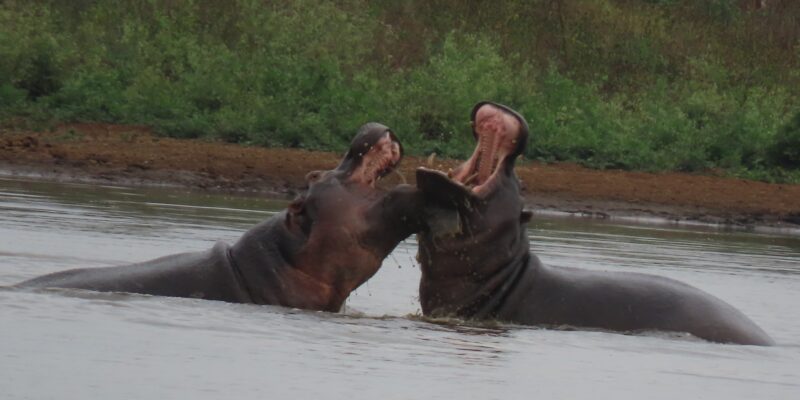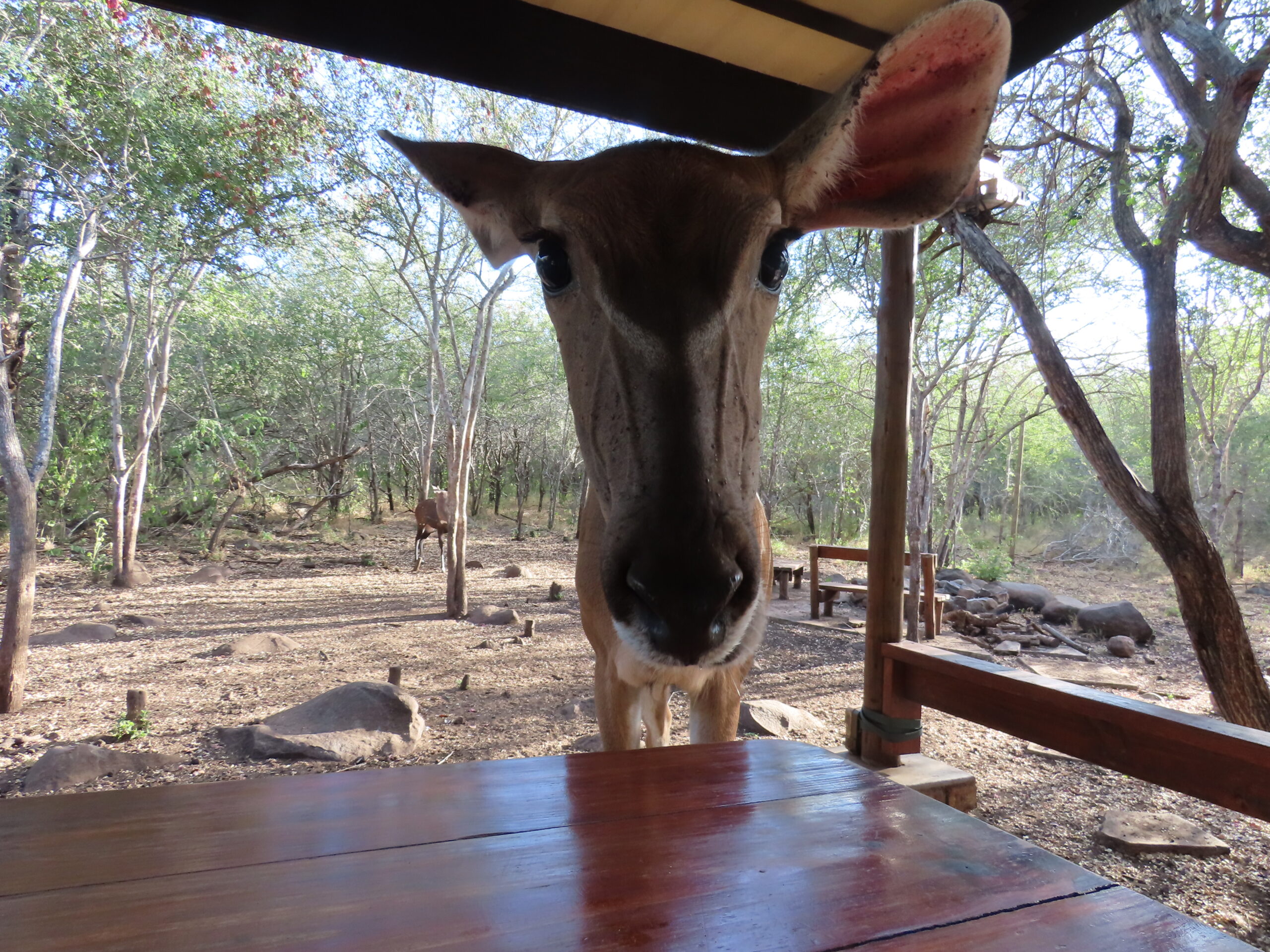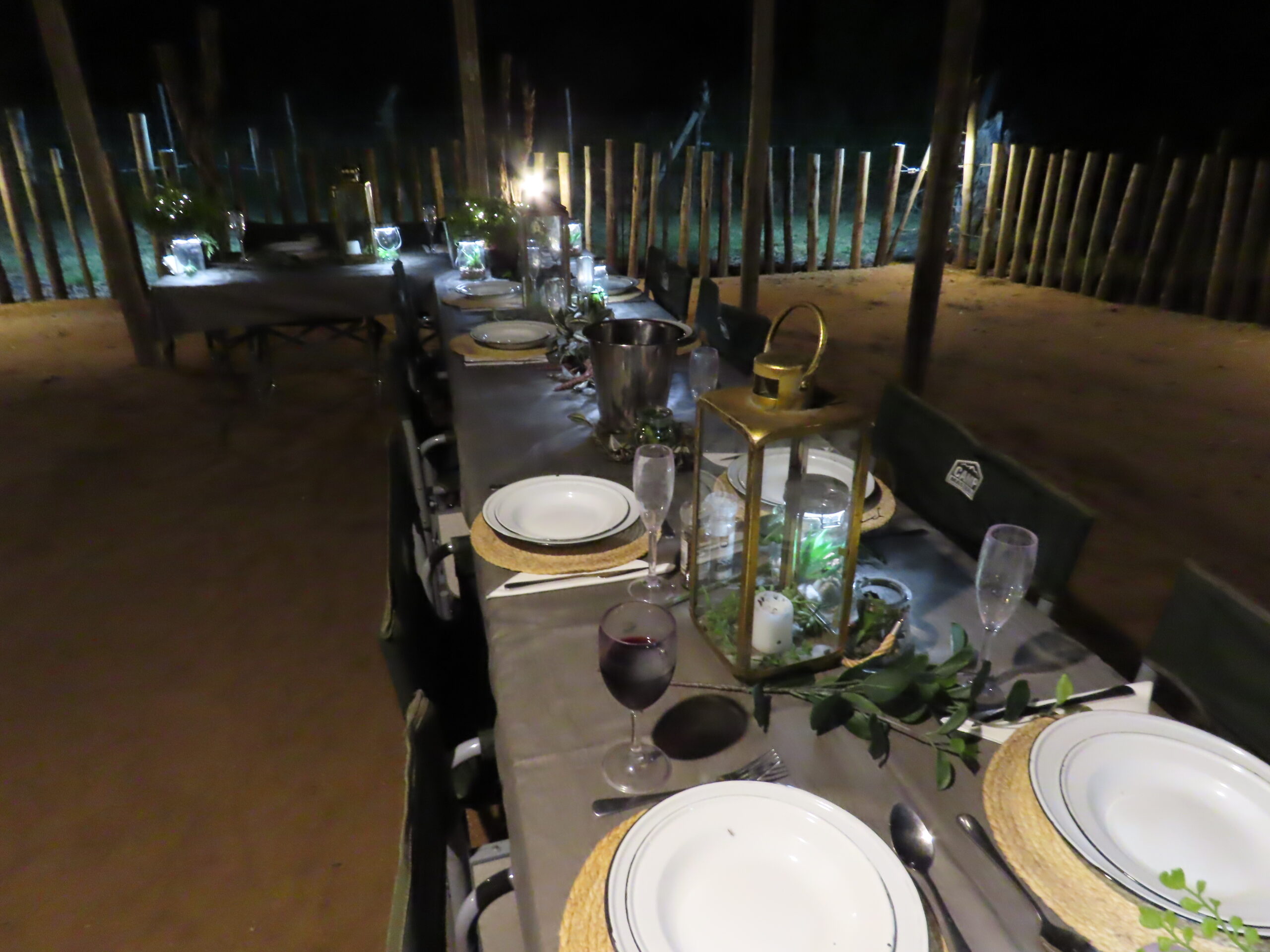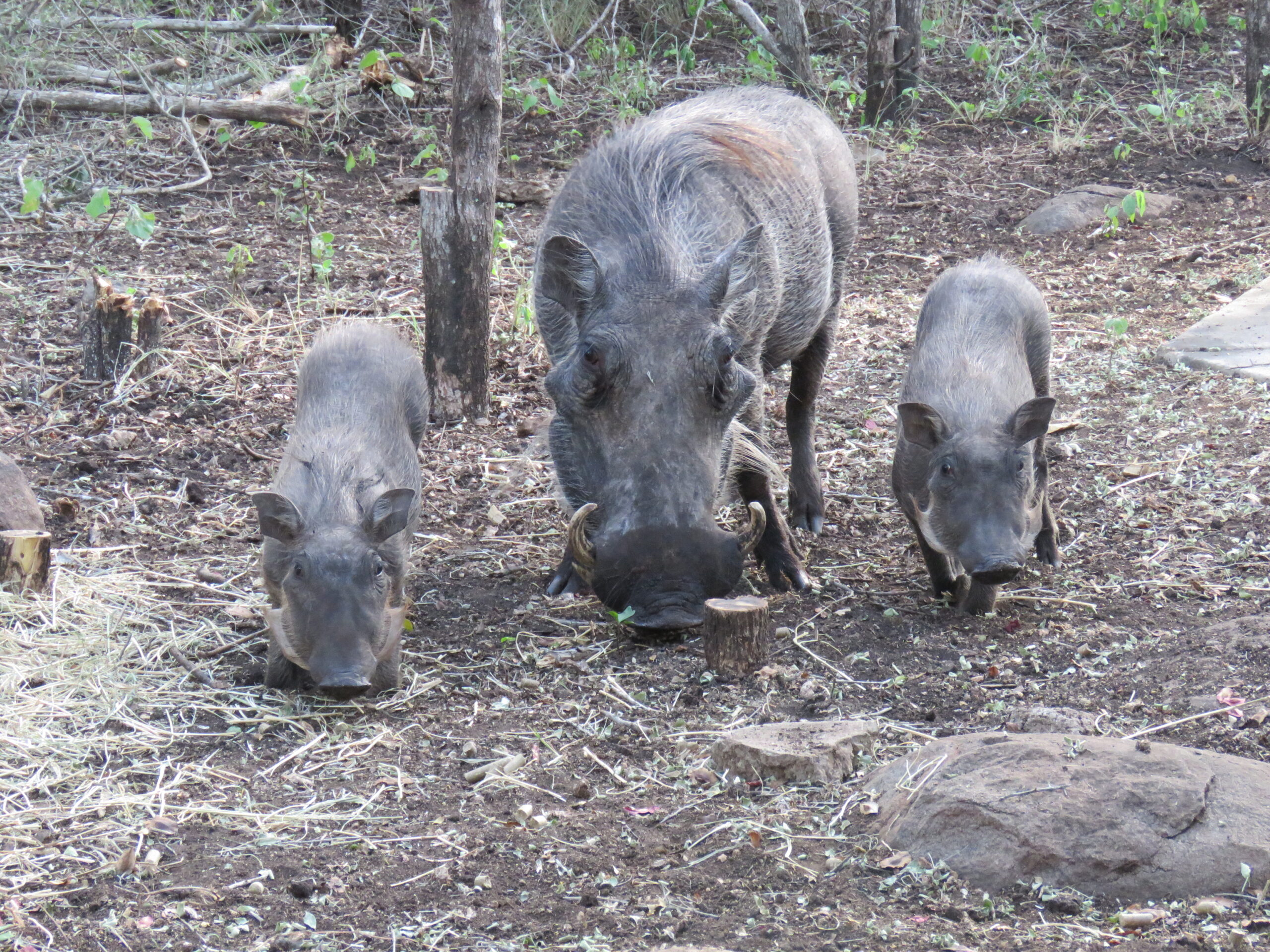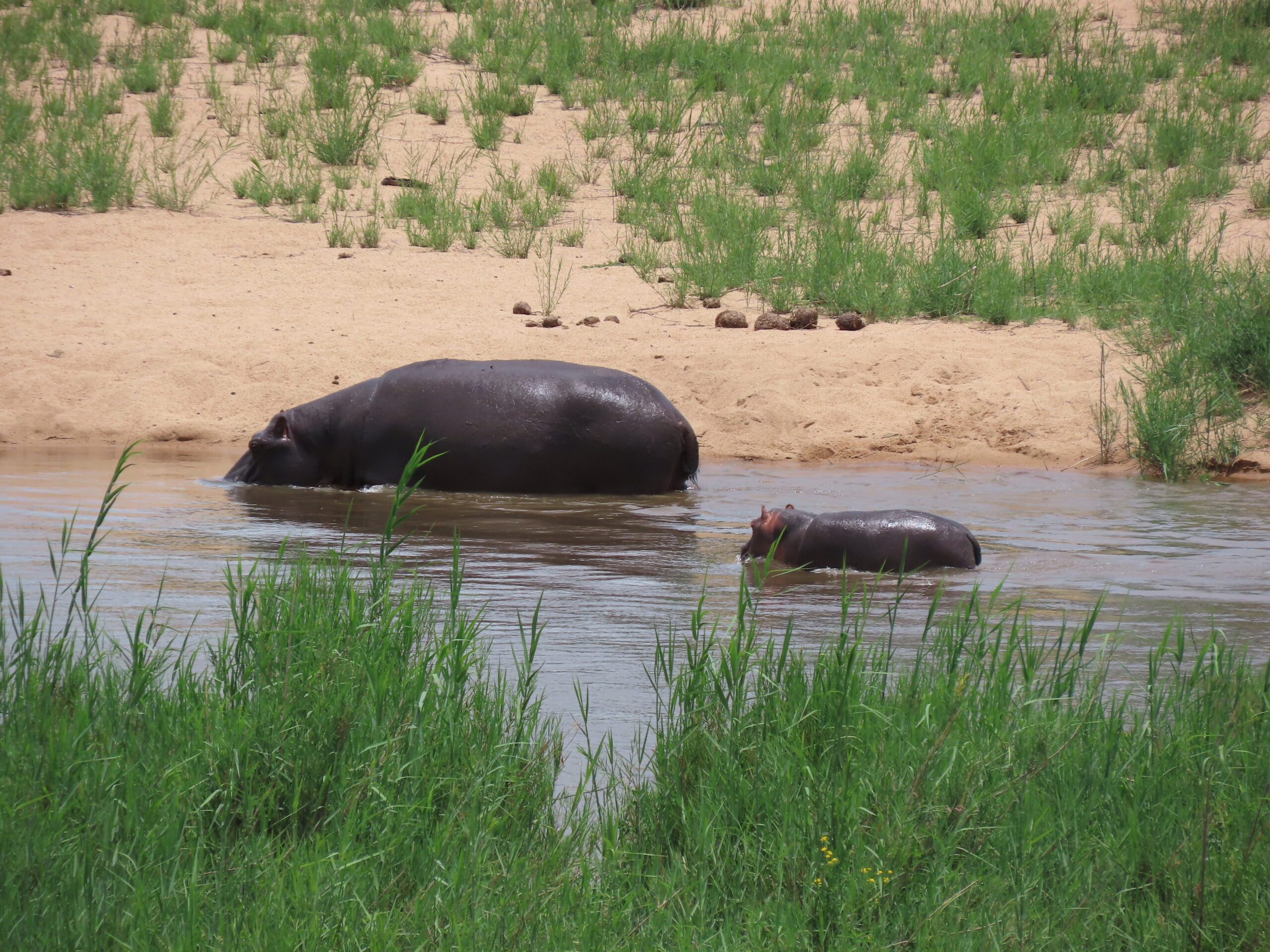For years, we’ve been taking photos of hippos, always attempting to get that much-revered shot with a hippo’s massive mouth wide open. We failed miserably, time after time. On Thursday, when we visited Kruger National Park, often referred to as “The Kruger,” we got those shots repeatedly.
Note: Today, there are no captions under our photos. The images speak for themselves. were

We couldn’t believe we were able to take the above video at the Sunset Dam in Lower Sabie. It couldn’t have been more exciting and rewarding. Speaking of the above video, please excuse the jittery camera. We were about a kilometer (.62 miles) from this event. Fortunately, we were also able to take several photos of the excitement, as shown here today.
 Our camera cannot zoom such a long distance without sacrificing the quality of the photos. But, to upgrade to a camera that could handle such distant images would result in a bulky piece of equipment, adding more weight to our already heavy baggage. I can place our lightweight Canon Power Shot camera in a carry-on bag without fear of it being stolen.
Our camera cannot zoom such a long distance without sacrificing the quality of the photos. But, to upgrade to a camera that could handle such distant images would result in a bulky piece of equipment, adding more weight to our already heavy baggage. I can place our lightweight Canon Power Shot camera in a carry-on bag without fear of it being stolen.

It’s only during such occasions that we wish we had a long-range lens, but it’s the way it is, and we’ve learned to live with our limitations on baggage weight and our unwillingness to handle heavy carry-on bags.

As for the hippos, it was quite a fight. Included on this site, hippos are fascinating animals who may fight for the reasons listed further in the article, as described below:
“What is a hippo?
There are two species of hippos — the large/common hippo and the smaller relative, the pygmy hippo. Hippos are the third-largest living land mammal, after elephants and white rhinos. Despite their large and bulky appearance, they have adaptations to their semi-aquatic environments allowing them to move swiftly on both water and land. Their feet have four-webbed toes that splay out to distribute weight evenly and therefore adequately support them on land, and their short legs provide powerful propulsion through the water. The pygmy hippos digits are more spread out and have less webbing and, proportionally, their legs are longer relative to its body size. They both have skin tones of purple-gray or slate color, with brownish-pink coloring around their eyes and ears. They have very thick skin that is virtually hairless except for the thick bristle-like hair on their heads and tails. The outer layers of skin are quite thin, making them prone to wounds from fighting. Their flat, paddle-like tail is used to spread excrement, which marks territory borders and indicates status of an individual. Their powerful jaws are capable of opening up to 150 degrees revealing their enormous incisors.

Challenges
Hippopotamus populations are threatened by hunting.
Hundreds of hippos are shot each year to minimize human-wildlife conflict, despite the fact that ditches or low fences easily deter them. It is more likely that the popularity of their meat is the reason for this strategy. Their fat and ivory tusks are also valuable to humans. At the beginning of the 21st century, the population of the common hippo declined more than 95 percent in the Democratic Republic of the Congo. In 2002, about 5.5 tons of hippo teeth were exported from Uganda, which equates to an estimated 2,000 individual animals. Hippopotamus teeth have been excluded from many of the strengthened ivory bans now spreading across the world making this vulnerable species at an increased risk from ivory poachers.

While the pygmy hippo is not generally a primary target for subsistence hunting, they are reported to be hunted opportunistically by bushmeat hunters.

Humans are pushing hippos out of their habitats.
As human populations grow, they encroach on wildlife habitats as they build new settlements, increase agricultural production, and construct new roads. The hippopotamus once ranged from the Nile Delta to the Cape, but now is mostly confined to protected areas. The primary threats to both hippopotamus species are habitat loss and deforestation.
Behaviors
Unlike us, the hippopotamus does not have sweat or sebaceous glands.
Both species rely on water or mud to keep cool — this accounts for the amount of time they spend in the water. Instead of sweating, they secrete a viscous red fluid, which protects the animal’s skin against the sun and possibly acts as healing agents.

Their social structures are dependent on food and water conditions.
These animals have a flexible social system. Common hippos are usually found in mixed groups of anywhere from 20 to 100 individuals held by a territorial bull, but in periods of drought large numbers are forced to congregate near limited pools of water. This overcrowding disrupts the hierarchical system, resulting in even higher levels of aggression, with the oldest and strongest males asserting dominance. Old scars and fresh, deep wounds are signs of daily fights. Unlike their social cousins, pygmy hippos are solitary and aren’t territorial. If they encounter each other outside of mating, then they simply ignore each other.

Diet
The surprisingly agile hippo climbs steep banks each night to graze on grass.
They leave the water pool at night to graze for four to five hours, covering up to eight kilometers (five miles) of territory. They will eat about 40 kilograms (88 pounds) of food during this time. Their modest appetite is due to its sedentary life, which does not require high outputs of energy. When returning from grazing before dawn, they will enter their water pool at the same spot they exited.”

We hope you enjoy today’s video and photos and will stop back tomorrow for more exciting wildlife photos from our recent visit to Kruger National Park.
Today is a beautiful, warm, sunny day with a slight breeze and low humidity. It couldn’t be more perfect. We had a fantastic social time and dinner at Jabula last night. Tonight, we’re headed to Alan and Fiona’s for sundowners which surely will prove to be another great night with friends in the bush.
Have a fabulous day!
Photo from one year ago today, July 23, 2021:


